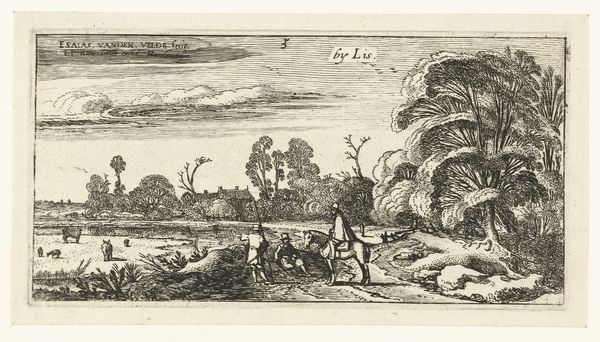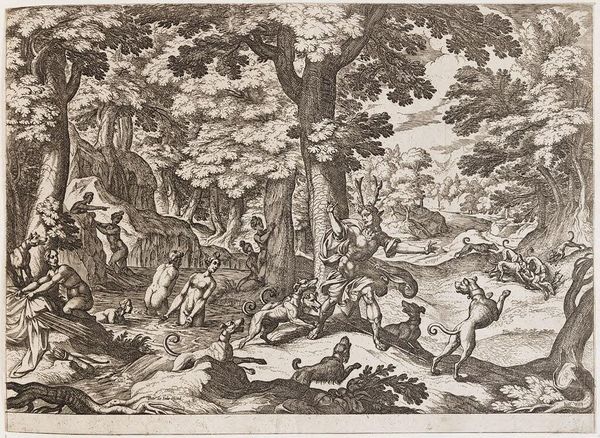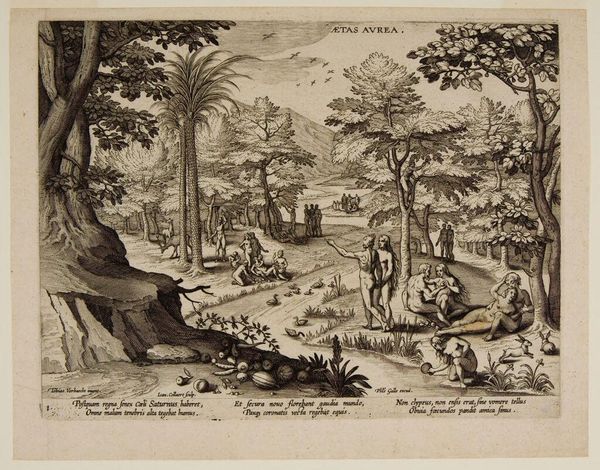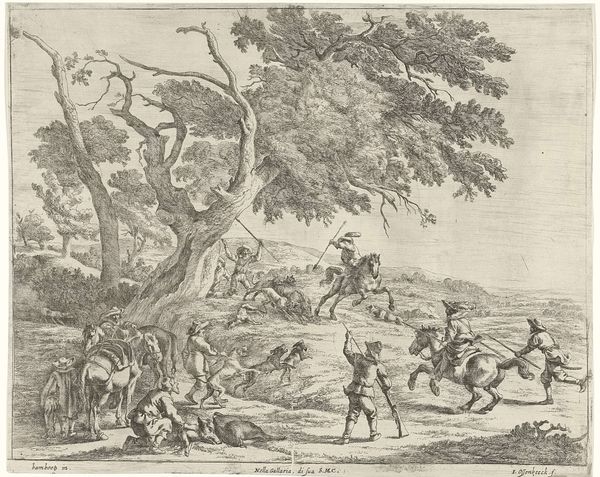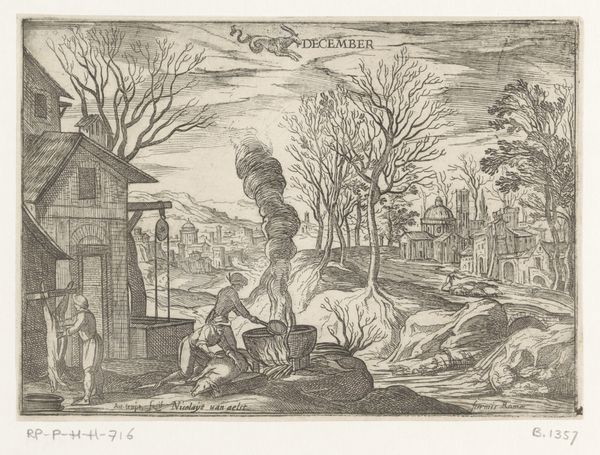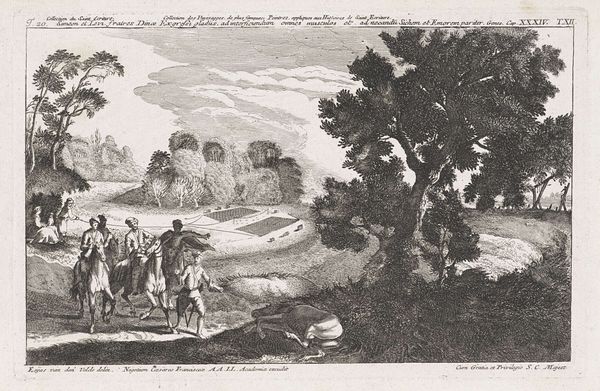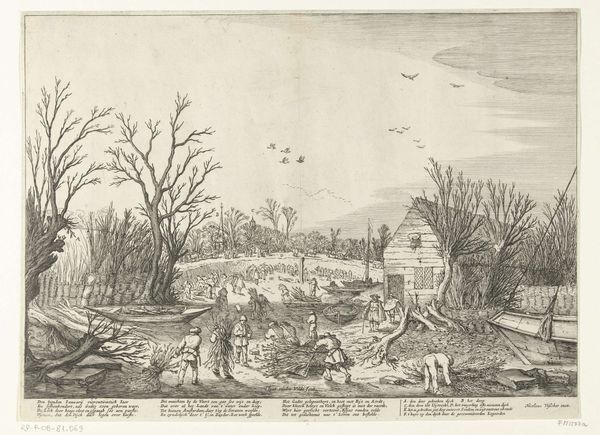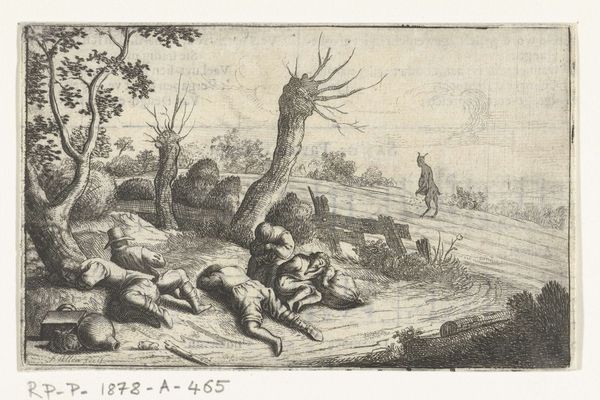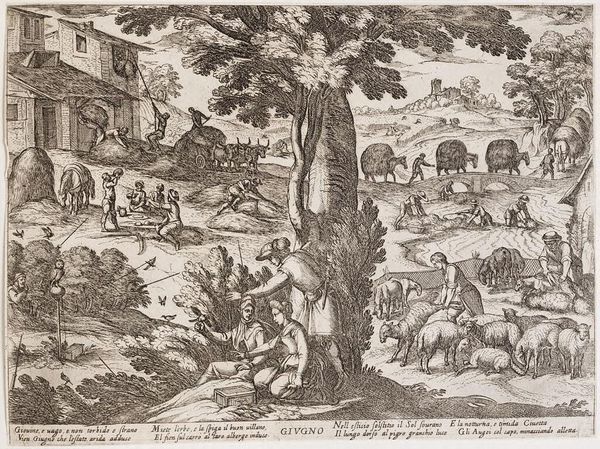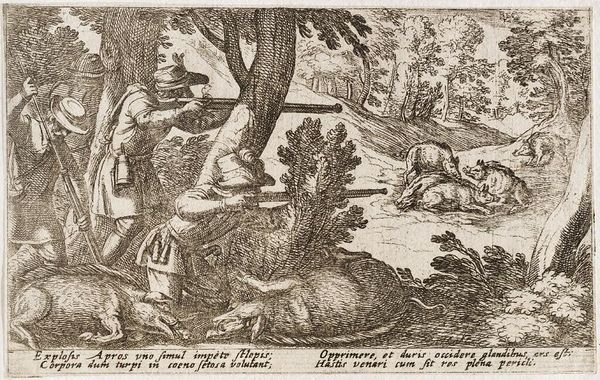
drawing, print, etching, ink
#
drawing
#
pen drawing
#
dutch-golden-age
#
mechanical pen drawing
# print
#
pen illustration
#
pen sketch
#
etching
#
landscape
#
figuration
#
personal sketchbook
#
ink
#
ink drawing experimentation
#
pen-ink sketch
#
line
#
pen work
#
sketchbook drawing
#
sketchbook art
Dimensions: height 86 mm, width 171 mm
Copyright: Rijks Museum: Open Domain
Esaias van de Velde made this print of a road near Lisse, in the Netherlands, sometime in the early 17th century. The scene is an everyday one of travelers, but its existence as an artwork tells us much about the changing social status of painting and printmaking. The Dutch Republic was a new kind of nation in the 17th century. It was a mercantile power without an aristocracy, and with a new, broad class of wealthy citizens. No longer were artists dependent on the church or the court for commissions. A market in art developed, and artists innovated to satisfy that market. Landscape prints and paintings became very popular, and artists like Van de Velde captured the local landscape. These scenes reflected a new sense of national pride, and a new way of seeing the relationship between people and the land. By looking into the archives of Dutch publishing houses, art historians have been able to trace how these images circulated and became a part of everyday life.
Comments
No comments
Be the first to comment and join the conversation on the ultimate creative platform.
